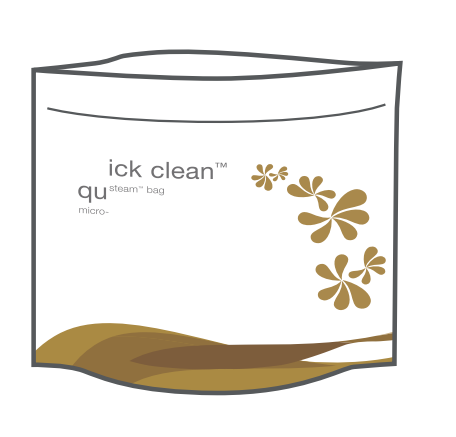A breast pump is an invaluable tool for new mothers during breastfeeding, but regular disinfection is crucial to ensure its safety and hygiene. This guide aims to provide you with a comprehensive breast pump disinfection guide, covering preparation, cleaning process, disinfection methods, post-disinfection precautions, and maintenance recommendations. By following these steps, you can ensure a safe and hygienic feeding environment for your baby, prevent infections, and safeguard your baby's health.
Preparation Before Disinfection
Hand Hygiene:Thoroughly wash your hands with warm water and soap for at least 20 seconds before handling the breast pump parts. Rinse hands thoroughly and dry with a clean towel.
Check Pump Condition:
Carefully inspect all parts of the breast pump, including membranes, flanges, duckbill valves, connectors, etc., ensuring they are free from visible dirt, mold, or damage. Replace or repair any problematic parts promptly.
Prepare Disinfection Tools:
Have the necessary disinfection tools ready, such as a boiling pot, steam sterilizer, or microwave disinfection bag, ensuring they are clean and in good condition.
Cleaning Process
Prepare Cleaning Supplies:
Use warm water and mild soap to prepare cleaning supplies, ensuring they are clean and free from other substances.
Soak and Clean:
Soak the disassembled breast pump parts in warm soapy water for a few minutes to dissolve dirt thoroughly.
Use a specialized breast pump cleaning brush or soft-bristled brush to clean all parts of the breast pump, especially hard-to-reach areas.
Rinse:
Thoroughly rinse all cleaned breast pump parts with running clean water to ensure soap and dirt are completely washed away.
Air Dry:
Place the rinsed breast pump parts on a clean towel or tissue paper to air dry naturally, ensuring there is no residual moisture.
Disinfection Methods
Disinfection of the breast pump is a crucial step in ensuring its hygiene and safety. Here are commonly used breast pump disinfection methods and steps:Boiling Disinfection:
Place the disassembled breast pump parts in a large container and add enough clean water.
Bring the water to a boil and maintain a rolling boil for 5-10 minutes, ensuring all parts are thoroughly disinfected.
Turn off the heat, let the parts soak in the boiling water for an additional 5-10 minutes, then remove and place them on a clean towel to air dry.

Steam Sterilization:
Use a specialized breast pump steam sterilizer and follow the device's instructions to place the disassembled breast pump parts in the steam basket.
Start the steam sterilizer and run the steam sterilization cycle as per the device's settings, usually taking 15-20 minutes.
After sterilization, remove the breast pump parts carefully and place them on a clean towel to air dry.
Microwave Disinfection:
Place the disassembled breast pump parts in a microwave disinfection bag, ensuring there is enough space for steam circulation inside the bag.
Follow the instructions on the bag to set the microwave power and time, typically around 15 minutes.
After disinfection, carefully remove the breast pump parts and place them on a clean towel to air dry.

Post-Disinfection Precautions
Allow Parts to Cool:
Ensure that the disinfected breast pump parts are completely cooled before any assembly or use. Hot parts may cause burns, and improper assembly due to hot parts can affect the pump's suction.
Avoid Touching Contaminated Surfaces:
When handling disinfected breast pump parts, avoid touching the surfaces directly to prevent recontamination. You can use a clean towel or tissue paper to handle the parts.
Prevent Cross-Contamination:
When using disinfected breast pump parts, avoid contact with non-disinfected items to prevent cross-contamination.
Regular Maintenance and Replacement
Regular Cleaning:Thoroughly clean all parts of the breast pump regularly (after each use or daily) to prevent dirt and bacterial growth. Use mild soap and warm water for cleaning, and rinse thoroughly.
Regular Replacement of Consumables:
It is recommended to replace consumables of the breast pump, such as membranes, flanges, valves, etc., every 3-6 months to ensure proper functioning and hygiene.
Regular Inspection:
Regularly inspect all parts of the breast pump for damage, wear, or looseness. If any issues are found, promptly repair or replace damaged parts to avoid affecting the pump's performance and safety.
Proper Storage:
When not in use, store all breast pump parts in a clean, dry, and light-protected environment. Avoid placing breast pump parts in direct sunlight or humid areas to prevent mold or bacterial growth.
Breast pump disinfection is a crucial step in ensuring the health and safety of both mother and baby during breastfeeding. By following the correct cleaning, disinfection, and regular maintenance procedures, you can effectively prevent bacterial infections and cross-contamination, ensuring your baby's healthy growth. Additionally, regular replacement of consumables and proper storage are key steps in maintaining breast pump performance and hygiene.
We recommend mothers to familiarize themselves with the breast pump's instructions for use and disinfection methods before use and strictly follow the operational procedures. Regularly check the condition of breast pump parts, replace consumables promptly, and perform proper cleaning and disinfection after use to ensure the breast pump's hygiene and safety.









